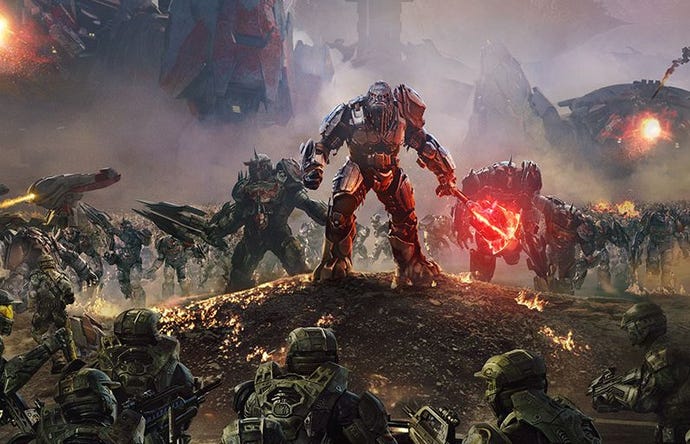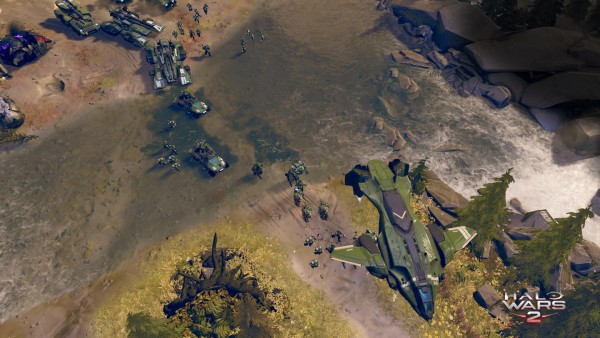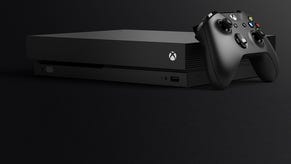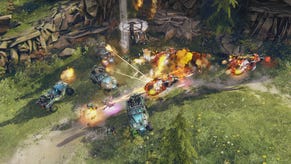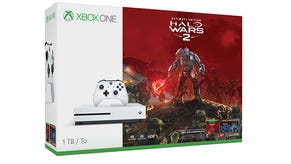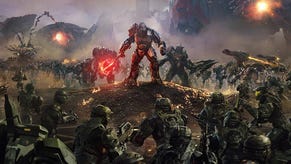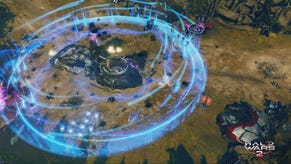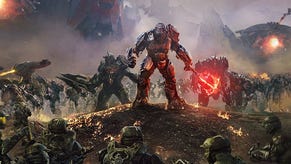Halo Wars 2 Blitz mode may just be the thing to reinvigorate the RTS genre, but it could also be easily ruined
Halo Wars 2's Blitz mode shows great promise, but you can already imagine nightmare scenarios.
Now that the Halo Wars 2 beta is available for everyone to play, I managed to finally get some hands-on time with one of my most anticipated games of the year. The premise of Halo Wars 2 may not sound very interesting, but look a little closer, and you’ll find plenty in there to be excited about
Most of it is a promise at this point, since I only got to play Blitz mode. It’s disappointing to see Blitz being the only option in the beta when the previous one had proper deathmatch, but it’s enough to hold its own.
Blitz is a bit like playing Hearthstone, only instead of on screen effects triggering as you place your cards on the board, the cards spawn actual units that you have control over. It’s a bit of an unexplored concept, and one that comes with its own set of challenges.
With Halo Wars 2 we finally have an idea of what that concept could look like. The objective is to capture control points around the map, the same way you would in a Call of Duty Domination match. It's a very simple setup, stripping away many of the core tenets of the genre. It's what goes on during a round of Blitz, however, that makes it fun and frustrating, sometimes in equal measure.
Before you head into a game of Blitz, you either need to construct a deck or pick a premade one. But here’s the thing: though you get to pick the stack you go in with, you have no control over which card will show up in your hand at any given moment.
Like Hearthstone (and I am using that game as a shorthand for general CCG mechanics here, forgive me), you can choose to play what’s in your hand, or discard a card and hope the replacement will be more useful. Energy is what controls the cards you play, and discarding any of them costs a small amount of it.
Energy is generated over time but the biggest influx comes from drop pods that appear a few times during the match. Destroying those pods and collecting the energy they contain is the best way to afford the more expensive units.
I imagine this is done to prevent turtling, and it no doubt creates an environment where random luck and tactical decision making can thrive. It’s both a blessing and a curse.
For starters, it forces you to adapt on the fly to the type of gameplay the cards you end up with offer, and requires you to continue evolving your strategy until the goal is reached. Though this is fun in its own right, it’s never as satisfying as a typical RTS deathmatch round.
You’re being asked to never follow a rigid path towards the win. This also means late-game is largely defined by whoever managed to get an expensive unit first. In fact, the concept of late-game barely exists here in the same way it’s existed before in the genre.
I’ve been in matches where players relied solely on fast units to cap objectives early on, hopping from one control point to another. They would never engage my army, but would instead just quickly attack drop pods to collect and hoard energy.
A couple of minutes later, they’d have enough energy to spawn one or two expensive, very powerful units. Once these are on the field, there’s little chance your standard approach of slowly building a squad will work out. Unfortunately, a lot of times this turns Blitz into a game of cat and mouse, which isn’t exactly my idea of fun.
On the other hand, the immediacy with which you can put your plans to the test, and how quickly you can spawn units (bypassing build and travel times), essentially makes it possible to course-correct in an instant, provided you have the energy for it.
The short match times (6-12 minutes) encourage this "race" approach, though, and I can’t say if it’s the designers’ intention or if it’s a by-product of bringing in CCG mechanics. I can definitely see this particular tactic being adopted by the community as the only way to play Blitz if nothing gets done about it.
This is what makes Blitz tricky to judge. Sometimes you’ll clutch a win at the last second because your guerrilla tactics paid off. Other times, you’ll realise the game is already over 2 minutes in without really understanding how it reached that point.
There’s definitely a lot of balance that needs to go into it, especially given how often I ran into uber units, not to mention making certain cheap units less powerful (hello, Locusts).
I should also mention another potentially poor design decision made with Blitz. Your cards level up each time you get duplicates. Levelling up a card increases its effectiveness, and although you get card packs at a fairly decent pace, the idea that someone can purchase $20 worth of cards to either buff their existing decks or expand the number of cards they have is scary.
Cards and card game elements have been infiltrating modern games at a rapid pace, and Microsoft has been at the forefront of that. They can, however, like every other modern feature, be utilised well to serve the game or exploited to benefit the publisher’s bottom line.
For a mode that moves as swiftly as Blitz, starting a round with buffed cards because you’ve been playing longer than I have, or had no issue forking out real money for card packs, could be its Achilles’ heel.
The core of Halo Wars 2 in how units move, sound, look, and function, is really solid. Even for a beta, it ran pretty well and relatively lag-free. This is why it’s worrying that Blitz, while offering a breath of fresh air in the genre, could turn out to be hoarders’ paradise.
Removed from this uncertainty, Blitz is actually a great way to ease players into an RTS. Because you’ll be seeing most units very often, you’re going to inadvertently learn their strengths and weaknesses, and work these out into your tactics.
There are more than a few things you’ll need to be aware of when it comes to base building and economy management if you decide to play standard deathmatch, but those are easier to pick up on than actually knowing what the hell to do in a fight.
The hierarchy of units – a big part of learning how to play an RTS - is presented in a way that isn’t messy, and I can completely see Blitz being someone’s gateway into the more involved base building modes.
There’s a lot here worth paying close attention to, so it’d be really interesting to watch how 343 and Creative Assembly handle Blitz at launch, even if the mode makes up about 20 percent of the overall experience.
These impressions are based on the PC version of the beta, played with a mouse and keyboard.
